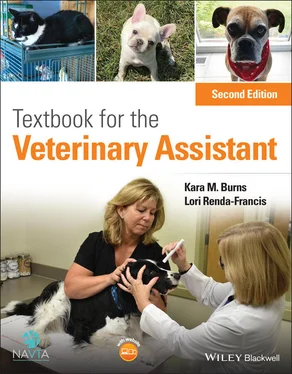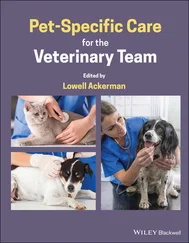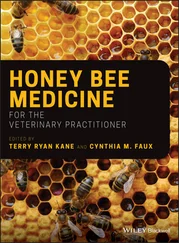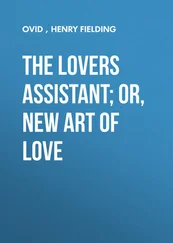Remember, animals and clients have specific preferences. The first step is noting these preferences in the pet’s medical record. Also consider starting an emotional record for each individual patient, in addition to the medical portion.
Some of the key concepts of applying Fear Free while providing medical care include communication, considerate approach, gentle control, and touch gradient. Creating a plan of action for each patient can be a quick process that saves time and creates a more pleasant experience for the veterinary healthcare team, patient, and client.
Common behavior signs associated with fear, anxiety, and stress in cats and dogs ( Figure 4.10)
Obvious signs
Cowering/crouching
Ear lowering
Growling
Hiding
Hissing (feline)
Lifting lip
Tucking tail
Trembling
Avoiding eye contact
Blinking slowly or squinting
Closing mouth tightly
Dilated pupils
Licking lips
Lifting paws
Pulling mouth back
Pacing
Panting
Self‐grooming
Shifting eyes
Staying close to the owner
Tail flicking/thrashing (feline)
Taking treats roughly, being pickier than usual about treats, or refusing treats
Unable to settle down
Yawning
Every member of the health‐care team should be able to recognize signs of a relaxed or stressed patient, as this is critical to establishing a Fear Free environment. As noted above, some signs may be subtle, and the owner will not recognize these as being associated with FAS. It is imperative that the health‐care team continually assesses the patient while at the veterinary hospital. The patient is actually communicating – we just need to be cognizant of the signs. Be aware of the patient’s body language and what it is conveying. Being aware of the subtle signs will allow the team to adjust their behaviors accordingly to prevent the patient from escalating. Adjusting behavior may be simple – such as pausing briefly to let the patient acclimate to your touch before proceeding.
Remember to keep an emotional record alongside the medical record and detail what worked for the patient. This will help future visits to be less stressful for all involved. Examples of information to be captured include:
types of rewards that were effective
where the patient preferred to be examined
the way a procedure was performed.
This way, when the patient returns for a hospital visit, the team will have an initial plan for care and the pet owner will be impressed with your thoughtfulness.
In addition, the veterinary team should use a considerate approach. This approach involves the interaction between the veterinary team, the patient, and input from the environment while veterinary care is being administered. Creating this relaxing and satisfying experience involves establishing the environment keeping the patient and client in mind. The veterinary team should put themselves in the pet and owner’s “shoes or paws.” Minimize the stress – provide nonslip surfaces for pets to stand on, include calming scents and/or pheromones, use calming sounds, reducing odor, etc. These all help in providing a relaxing and calming environment for pets and owners alike.
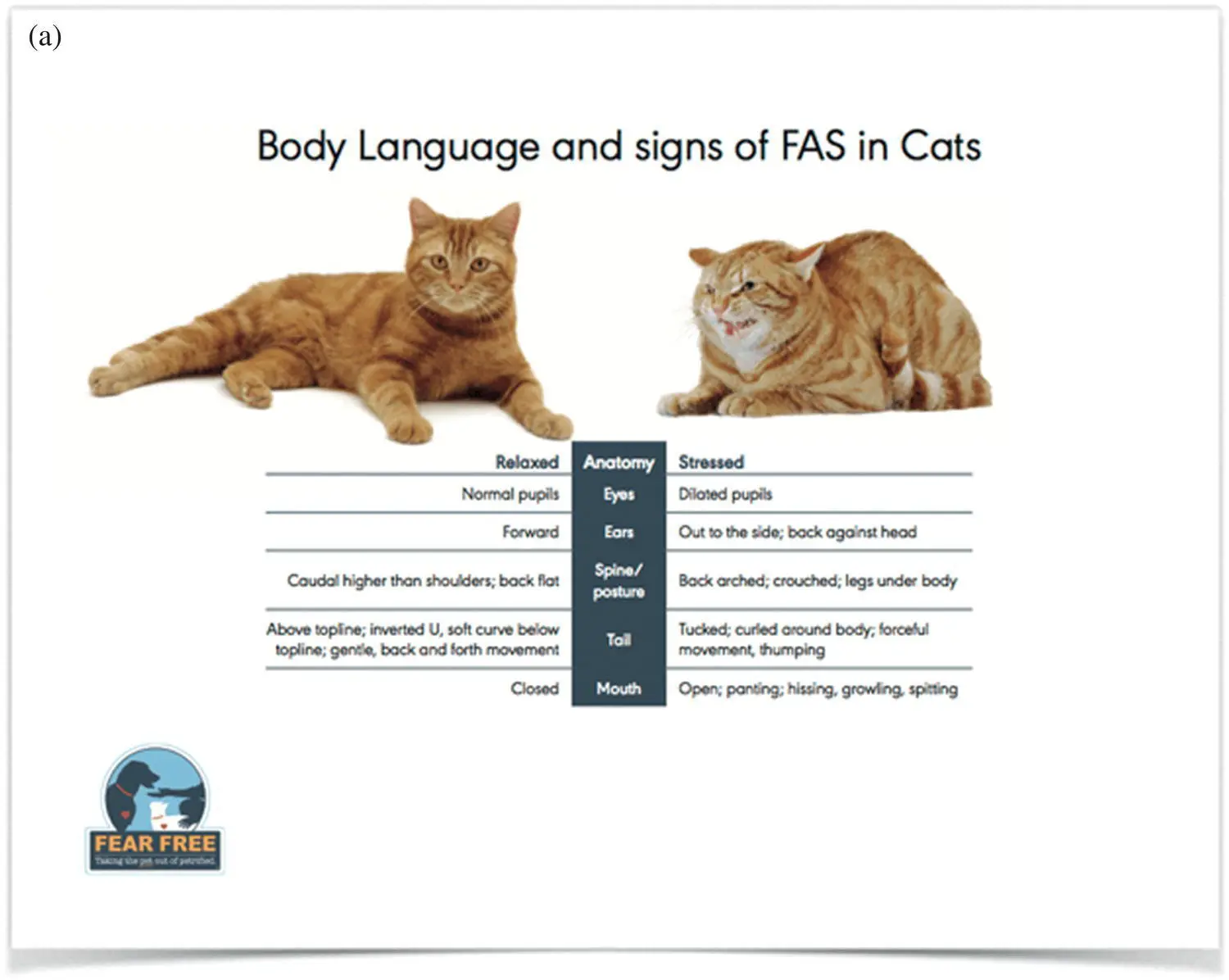
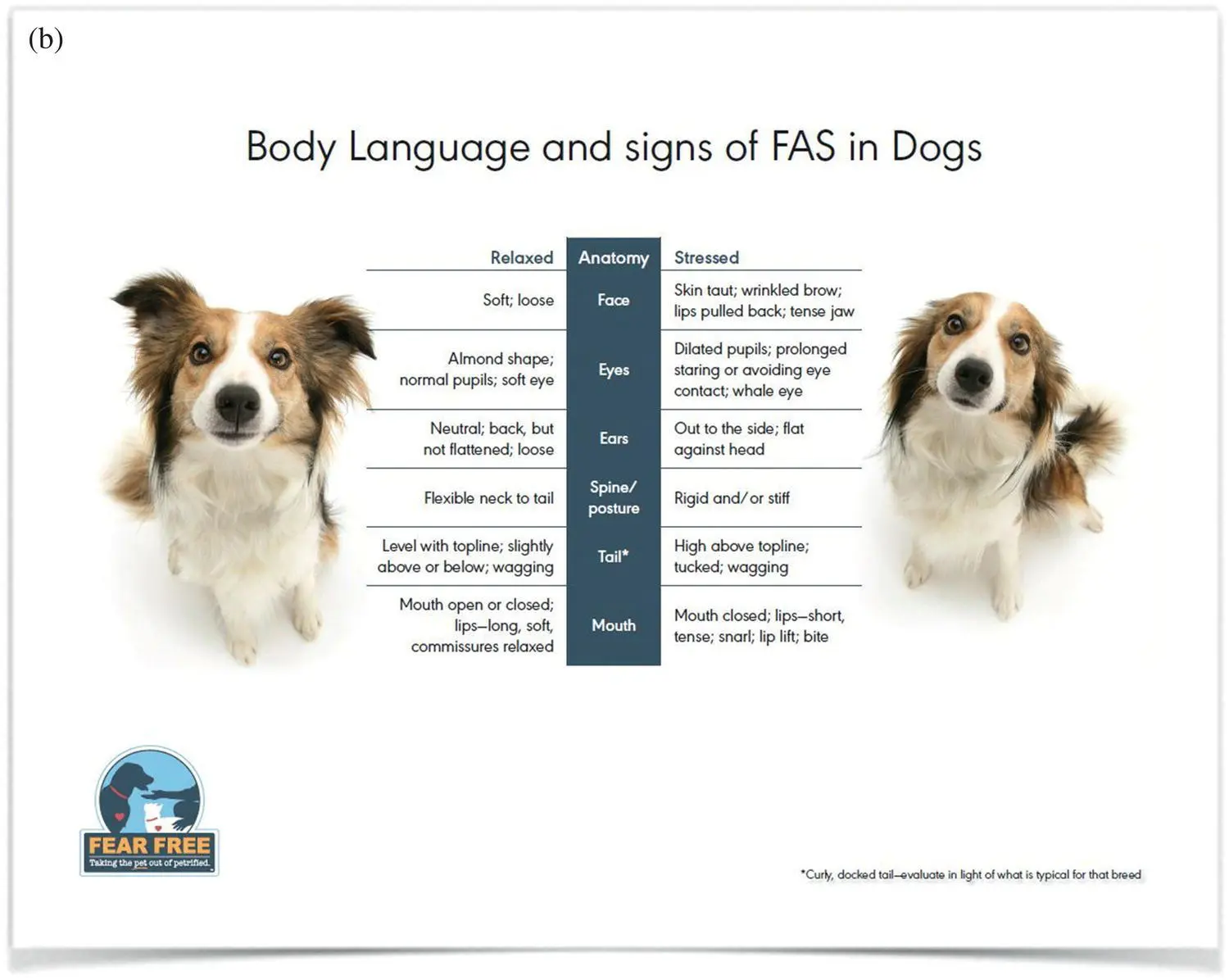
Figure 4.10 Fear and stress in (a) cats and (b) dogs.
Gentle control is another tool from the Fear Free toolbox. It incorporates how the veterinary team comfortably and safely positions the patient to allow the administration of veterinary care with minimal restraint. We discuss restraint above in this chapter, as we know it is frequently the restraint that frightens and stresses patients. As mentioned above, using distraction techniques while providing gentle guidance and support to a patient allows many procedures to be performed safely and with slight restraint and fewer team members.
For a greater understanding of Fear Free and the initiative which aims to make veterinary visits less stressful, visit https://fearfreepets.com/
If an animal is staying at the hospital and will be placed in a run, cage, or kennel, it must wear an identification collar around its neck, unless injury prevents it from doing so. The hospitalization collar must stay on for the duration of the hospital visit. The information on the hospitalization collar must include:
patient’s name
owner’s name
hospital admission date
attending veterinarian
reason for admission
allergies and/or warnings – large/bright for team to notice easily.
All patients admitted to the hospital must also have a cage or medical card. The information above should be on the patient’s cage or medical card, along with observations/notes on the following:
food fed
type of food
amount of food eaten
water given and amount
amount of water patient drank
urination
defecation
body temperature and time taken
medications administered, time administered.
As with all animals, proper restraint techniques for birds are important for the safety of the handler and the person performing examinations or treatments, but most importantly for the safety and well‐being of the patient. Restraint is a large stressor for avian patients, so knowing the avian patient and proper restraint and capture techniques will help to decrease pain and stress resulting from restraint.
All escape routes should be closed, and the room should be sealed. Hiding places to which the bird may flee should be identified and closed off. To capture and restrain an avian patient, it is recommended to use a towel. Towels of different sizes relative to the size of the bird are indicated. Using a towel to capture a bird helps to reduce fear of hands in the future. Gloves are not recommended, as a fear of hands may develop with gloves and the wearer loses much of their tactile sensation which is extremely important when handling birds. A slow approach with the towel in hand is best. Do not try to capture a bird that is sitting on the owner, as this may result in behavioral issues of the bird toward the owner and may result in the bird biting or attacking the owner. Remember to use a calm and soothing tone when approaching a bird. Confidence should be displayed, especially when trying to capture and restrain a large bird – they can detect fear and hesitation.
The hand (in the towel) should grasp the head of the bird toward the cervical (lower) end of the head but do not choke around the neck. Hold the sides of the head firmly, but insure the bird is able to breathe. Oftentimes, letting the bird bite the excess towel offers a distraction. For small birds, use the remainder of the hand to control the body and make sure the towel is wrapped around the bird to control the wings and feet ( Figure 4.11). Larger birds should remain controlled with the opposite hand holding the towel that is wrapped around the body. The person restraining the bird should be monitoring the bird’s respirations and stress level the entire time it is restrained. Observe the avian patient closely for signs of stress, hypoxia, and hyperthermia. Hands should be moved accordingly to allow the examiner to exam the bird at a faster pace.
Читать дальше
